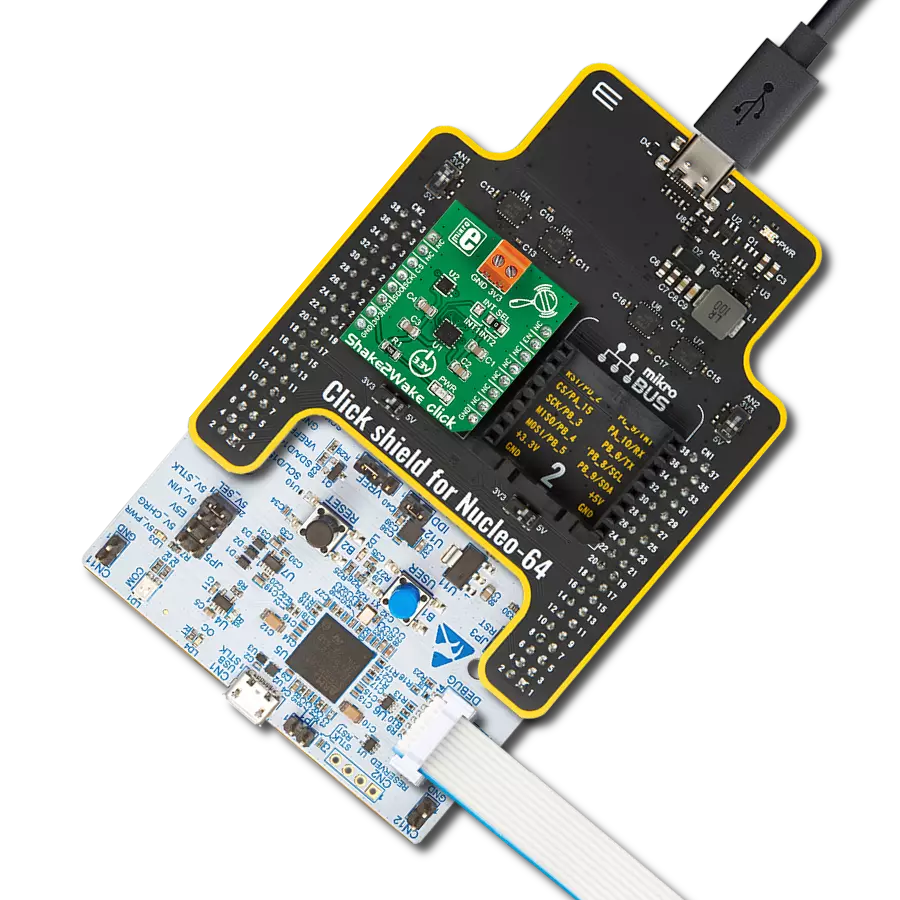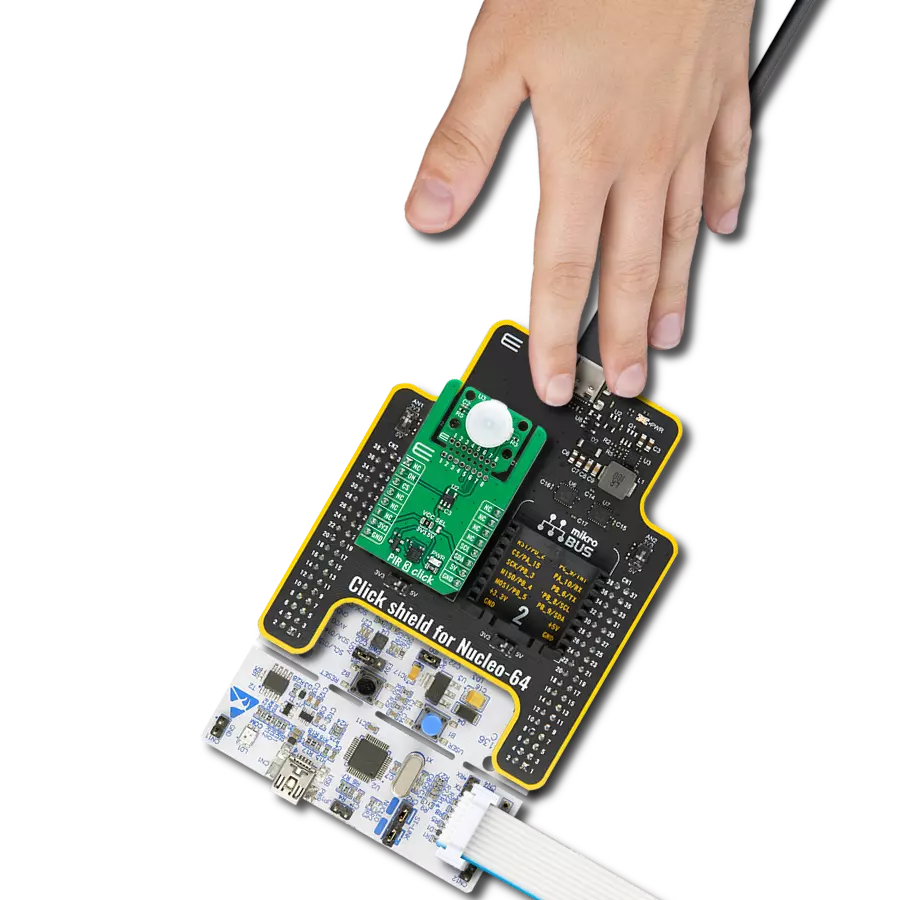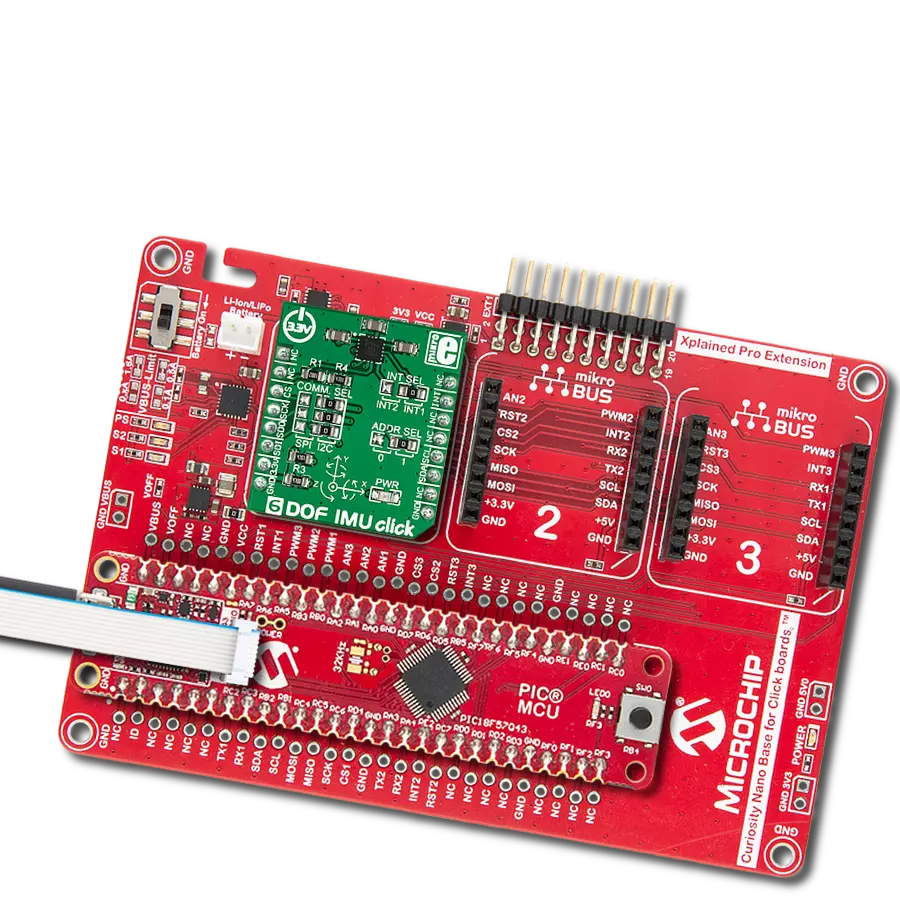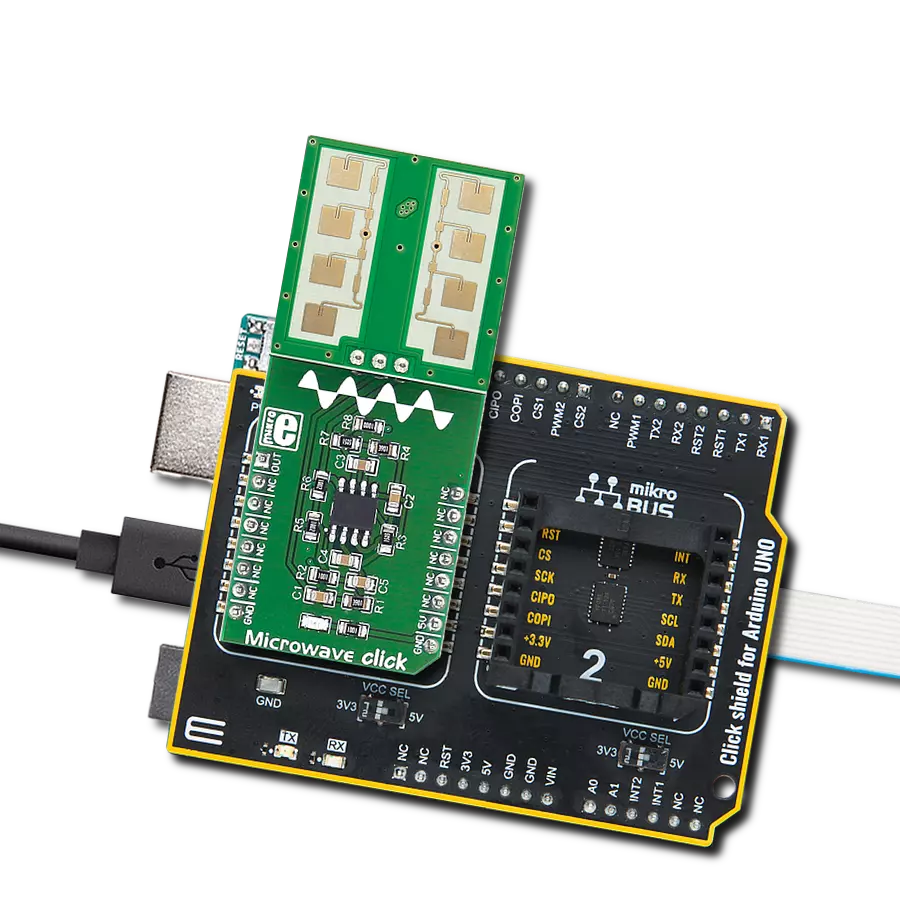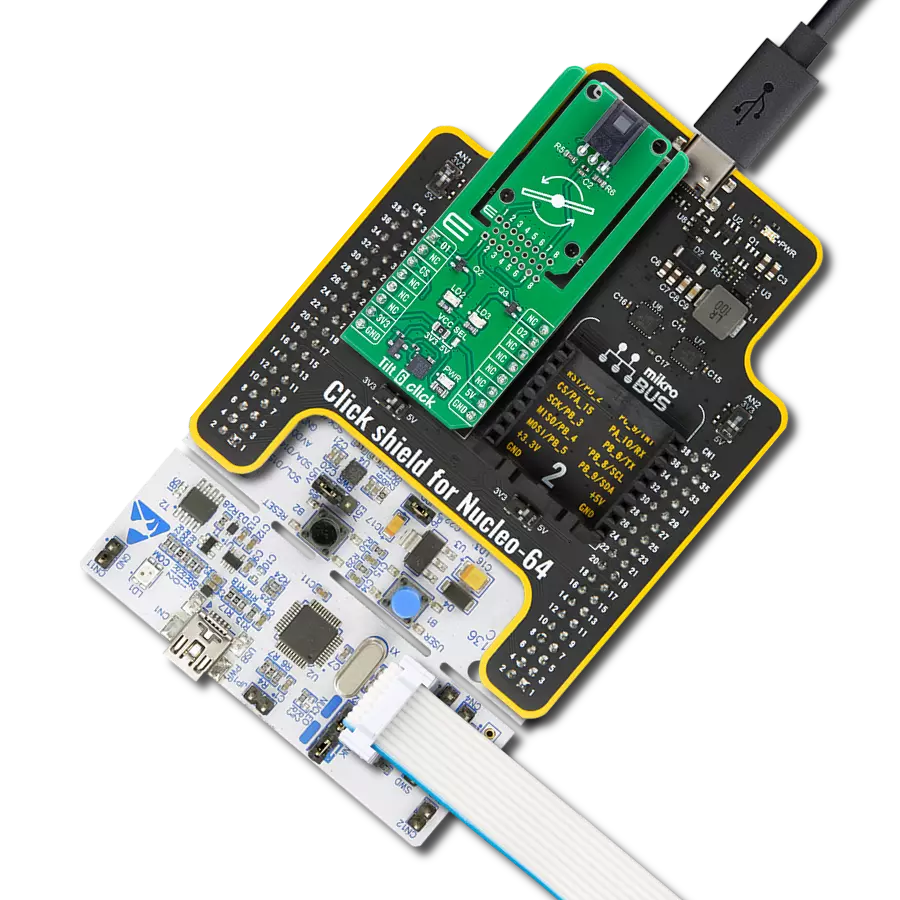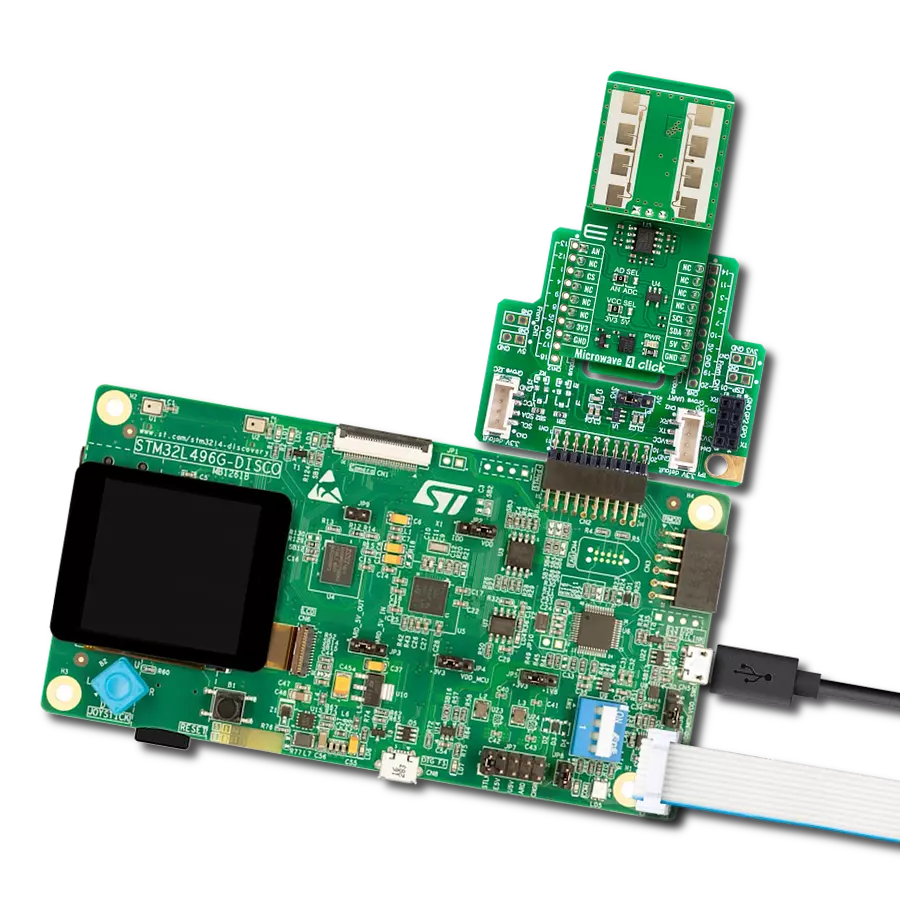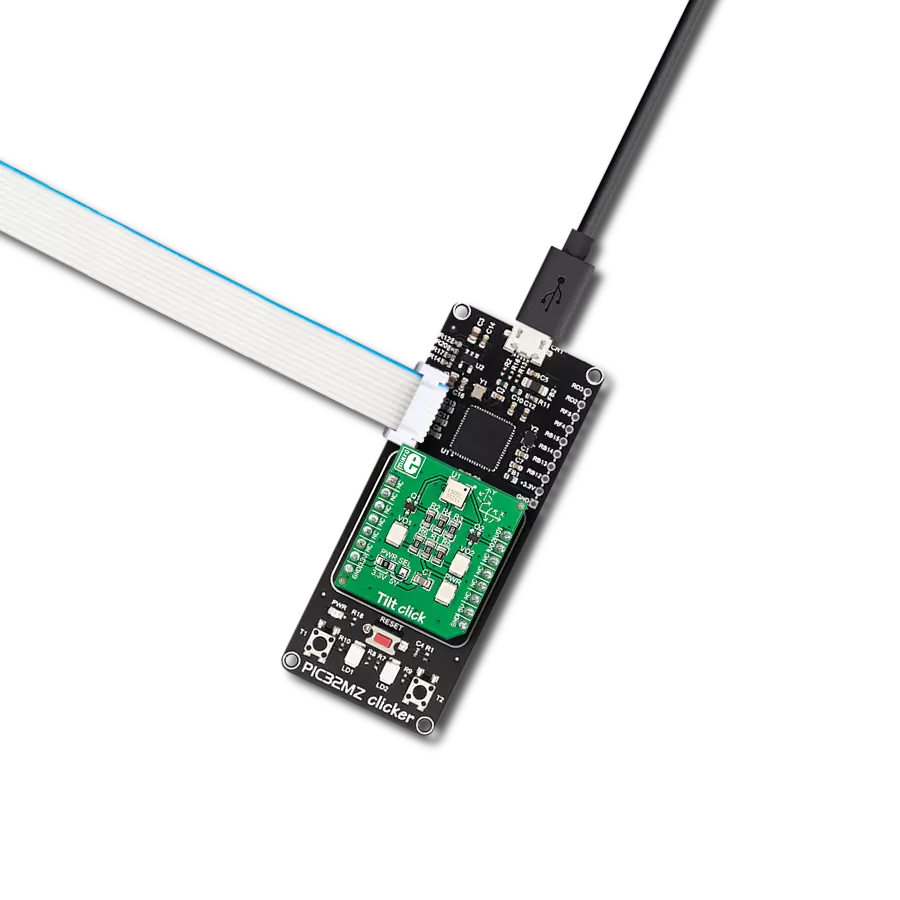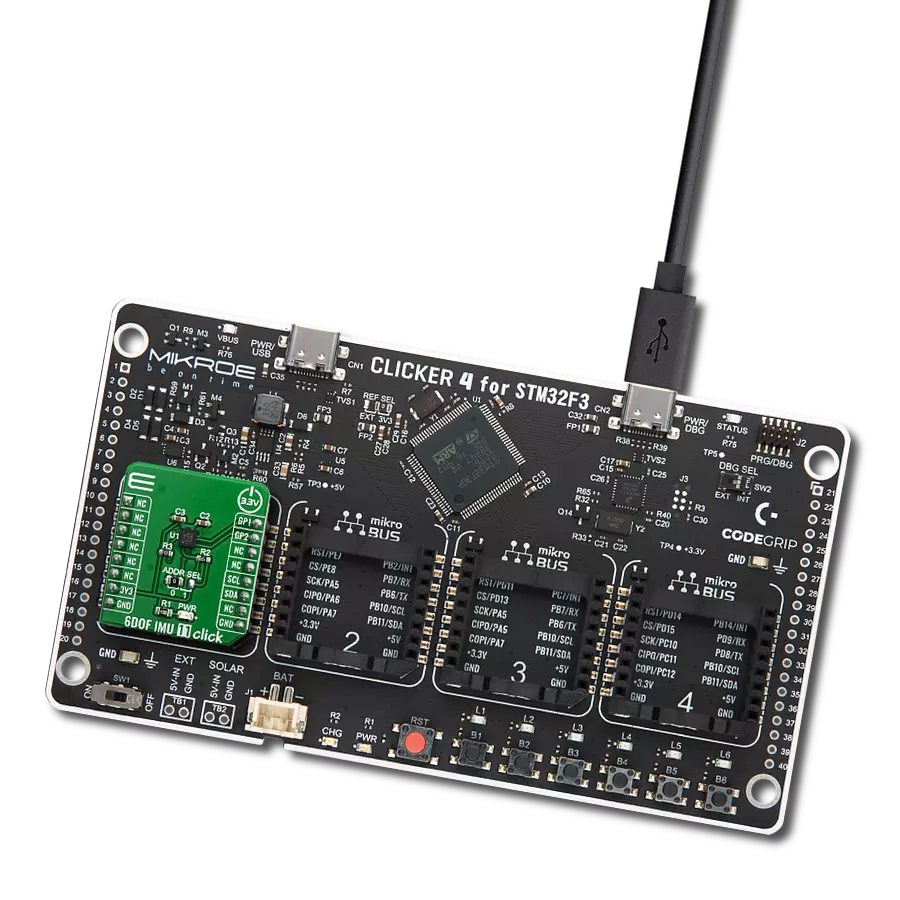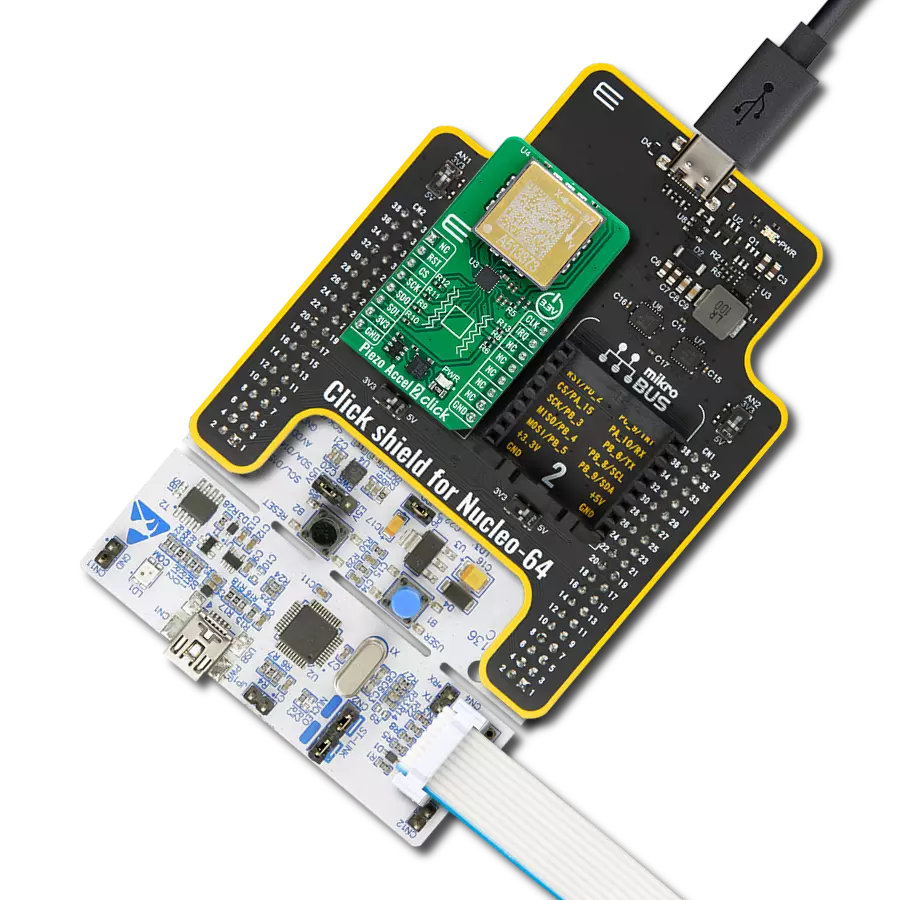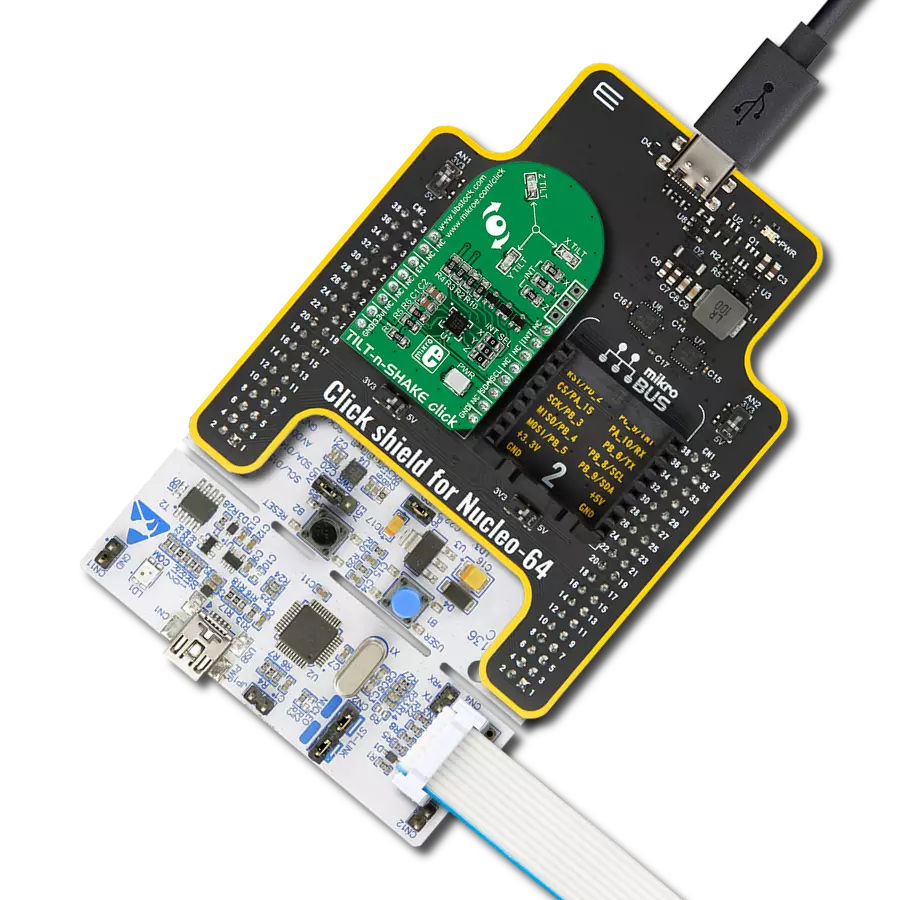Our 6DOF IMU solution empowers you to achieve precise motion and position tracking, opening doors to seamless navigation in various applications
A
A
Hardware Overview
How does it work?
6DOF IMU 3 Click is based on the FXOS8700CQ, a small, low-power, 3-axis, linear accelerometer and 3-axis magnetometer combined into a single package from NXP Semiconductor. The device features a selectable I2C or point-to-point SPI serial interface with a 14-bit accelerometer and 16-bit magnetometer ADC resolution and smart-embedded functions. The FXOS8700CQ has dynamically selectable acceleration full-scale ranges of ±2 g/±4 g/±8 g and a fixed magnetic measurement range of ±1200 μT. For each sensor, the user selects output data rates (ODR) from 1.563Hz to 800Hz. Interleaved magnetic and acceleration data is available at ODR rates up to 400Hz. The sensor's sensitivity is represented in mg/LSB for the accelerometer and μT/LSB for the magnetometer. The magnetometer sensitivity is
fixed at 0.1 μT/LSB. The accelerometer sensitivity changes with the full-scale range selected by the user. Accelerometer sensitivity is 0.244 mg/LSB in 2 g mode, 0.488 mg/LSB in 4 g mode, and 0.976 mg/LSB in 8 g mode, making it ideal for applications such as used for security, like motion detection, door opening, smart home applications, robotics and unmanned aerial vehicles (UAVs) with electronic compass (e-compass) function, in medical purposes, like patient monitoring, fall detection and more. 6DOF IMU 3 Click supports both SPI and I2C communication interfaces, allowing it to be used with various MCUs. The communication interface can be selected by moving SMD jumpers grouped under the COM SEL to an appropriate position (SPI or I2C). The slave I2C address can also be configured by an
SMD jumper when the Click board™ is operated in the I2C mode. An SMD jumper labeled ADDR SEL sets the least significant bit (LSB) of the I2C address. The I2C interface complies with fast mode (400 kHz) and normal mode (100 kHz) I2C standards, while the SPI interface is a classical Host/Peripheral serial port. The FXOS8700CQ is always considered as the peripheral and thus is never initiating the communication. This Click board™ can be operated only with a 3.3V logic voltage level. The board must perform appropriate logic voltage level conversion before using MCUs with different logic levels. Also, it comes equipped with a library containing functions and an example code that can be used as a reference for further development.
Features overview
Development board
Arduino UNO is a versatile microcontroller board built around the ATmega328P chip. It offers extensive connectivity options for various projects, featuring 14 digital input/output pins, six of which are PWM-capable, along with six analog inputs. Its core components include a 16MHz ceramic resonator, a USB connection, a power jack, an
ICSP header, and a reset button, providing everything necessary to power and program the board. The Uno is ready to go, whether connected to a computer via USB or powered by an AC-to-DC adapter or battery. As the first USB Arduino board, it serves as the benchmark for the Arduino platform, with "Uno" symbolizing its status as the
first in a series. This name choice, meaning "one" in Italian, commemorates the launch of Arduino Software (IDE) 1.0. Initially introduced alongside version 1.0 of the Arduino Software (IDE), the Uno has since become the foundational model for subsequent Arduino releases, embodying the platform's evolution.
Microcontroller Overview
MCU Card / MCU
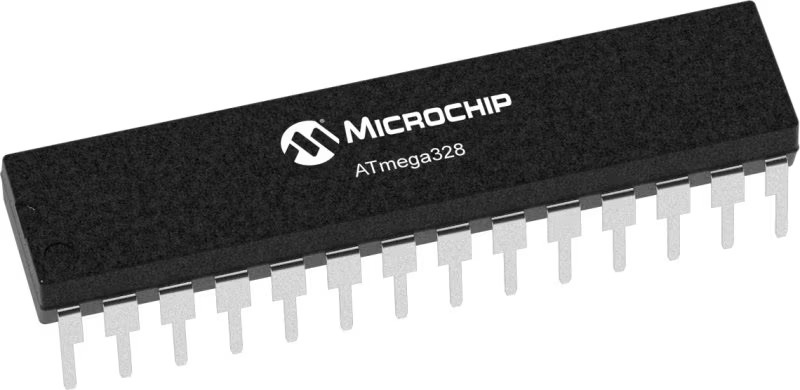
Architecture
AVR
MCU Memory (KB)
32
Silicon Vendor
Microchip
Pin count
32
RAM (Bytes)
2048
You complete me!
Accessories
Click Shield for Arduino UNO has two proprietary mikroBUS™ sockets, allowing all the Click board™ devices to be interfaced with the Arduino UNO board without effort. The Arduino Uno, a microcontroller board based on the ATmega328P, provides an affordable and flexible way for users to try out new concepts and build prototypes with the ATmega328P microcontroller from various combinations of performance, power consumption, and features. The Arduino Uno has 14 digital input/output pins (of which six can be used as PWM outputs), six analog inputs, a 16 MHz ceramic resonator (CSTCE16M0V53-R0), a USB connection, a power jack, an ICSP header, and reset button. Most of the ATmega328P microcontroller pins are brought to the IO pins on the left and right edge of the board, which are then connected to two existing mikroBUS™ sockets. This Click Shield also has several switches that perform functions such as selecting the logic levels of analog signals on mikroBUS™ sockets and selecting logic voltage levels of the mikroBUS™ sockets themselves. Besides, the user is offered the possibility of using any Click board™ with the help of existing bidirectional level-shifting voltage translators, regardless of whether the Click board™ operates at a 3.3V or 5V logic voltage level. Once you connect the Arduino UNO board with our Click Shield for Arduino UNO, you can access hundreds of Click boards™, working with 3.3V or 5V logic voltage levels.
Used MCU Pins
mikroBUS™ mapper
Take a closer look
Click board™ Schematic

Step by step
Project assembly
Track your results in real time
Application Output
1. Application Output - In Debug mode, the 'Application Output' window enables real-time data monitoring, offering direct insight into execution results. Ensure proper data display by configuring the environment correctly using the provided tutorial.

2. UART Terminal - Use the UART Terminal to monitor data transmission via a USB to UART converter, allowing direct communication between the Click board™ and your development system. Configure the baud rate and other serial settings according to your project's requirements to ensure proper functionality. For step-by-step setup instructions, refer to the provided tutorial.

3. Plot Output - The Plot feature offers a powerful way to visualize real-time sensor data, enabling trend analysis, debugging, and comparison of multiple data points. To set it up correctly, follow the provided tutorial, which includes a step-by-step example of using the Plot feature to display Click board™ readings. To use the Plot feature in your code, use the function: plot(*insert_graph_name*, variable_name);. This is a general format, and it is up to the user to replace 'insert_graph_name' with the actual graph name and 'variable_name' with the parameter to be displayed.

Software Support
Library Description
This library contains API for 6DOF IMU 3 Click driver.
Key functions:
c6dofimu3_check_id- Function check device ID by read ID value from the sensor ID register address of FXOS8700CQ 6-axis sensor with integrated linear accelerometer and magnetometer on 6DOF IMU 3 Click board.c6dofimu3_read_mag_data- Function read 16-bit ( signed ) Magnetometer X-axis, Y-axis data and Z-axis data from the 6 targeted starts from C6DOFIMU3_M_OUT_X_MSB register address of FXOS8700CQ 6-axis sensor with integrated linear accelerometer and magnetometer on 6DOF IMU 3 Click board.c6dofimu3_read_accel_data- Function read 14-bit ( signed ) Accel X-axis, Y-axis data and Z-axis data from the 6 targeted starts from C6DOFIMU3_OUT_X_MSB register address of FXOS8700CQ 6-axis sensor with integrated linear accelerometer and magnetometer on 6DOF IMU 3 Click board.
Open Source
Code example
The complete application code and a ready-to-use project are available through the NECTO Studio Package Manager for direct installation in the NECTO Studio. The application code can also be found on the MIKROE GitHub account.
/*!
* \file
* \brief 6Dofimu3 Click example
*
* # Description
* This example demonstrates the use of 6DOF IMU 3 Click board.
*
* The demo application is composed of two sections :
*
* ## Application Init
* Initializes the driver and sets the device default configuration.
*
* ## Application Task
* Measures acceleration and magnetometer data and displays the results on USB UART each second.
*
* \author MikroE Team
*
*/
// ------------------------------------------------------------------- INCLUDES
#include "board.h"
#include "log.h"
#include "c6dofimu3.h"
// ------------------------------------------------------------------ VARIABLES
static c6dofimu3_t c6dofimu3;
static log_t logger;
c6dofimu3_accel_t accel_data;
c6dofimu3_mag_t mag_data;
// ------------------------------------------------------ APPLICATION FUNCTIONS
void application_init ( void )
{
log_cfg_t log_cfg;
c6dofimu3_cfg_t cfg;
/**
* Logger initialization.
* Default baud rate: 115200
* Default log level: LOG_LEVEL_DEBUG
* @note If USB_UART_RX and USB_UART_TX
* are defined as HAL_PIN_NC, you will
* need to define them manually for log to work.
* See @b LOG_MAP_USB_UART macro definition for detailed explanation.
*/
LOG_MAP_USB_UART( log_cfg );
log_init( &logger, &log_cfg );
log_info( &logger, "---- Application Init ----" );
// Click initialization.
c6dofimu3_cfg_setup( &cfg );
C6DOFIMU3_MAP_MIKROBUS( cfg, MIKROBUS_1 );
c6dofimu3_init( &c6dofimu3, &cfg );
c6dofimu3_default_cfg( &c6dofimu3 );
Delay_ms ( 100 );
}
void application_task ( void )
{
if ( c6dofimu3_check_data_ready( &c6dofimu3 ) )
{
c6dofimu3_get_data ( &c6dofimu3, &accel_data, &mag_data );
log_printf( &logger, " Accel X : %.2f mg \t Mag X : %.2f uT\r\n", accel_data.x, mag_data.x );
log_printf( &logger, " Accel Y : %.2f mg \t Mag Y : %.2f uT\r\n", accel_data.y, mag_data.y );
log_printf( &logger, " Accel Z : %.2f mg \t Mag Z : %.2f uT\r\n", accel_data.z, mag_data.z );
log_printf( &logger, "-------------------------------------\r\n" );
Delay_ms ( 800 );
}
}
int main ( void )
{
/* Do not remove this line or clock might not be set correctly. */
#ifdef PREINIT_SUPPORTED
preinit();
#endif
application_init( );
for ( ; ; )
{
application_task( );
}
return 0;
}
// ------------------------------------------------------------------------ END
Additional Support
Resources
Category:Motion




















